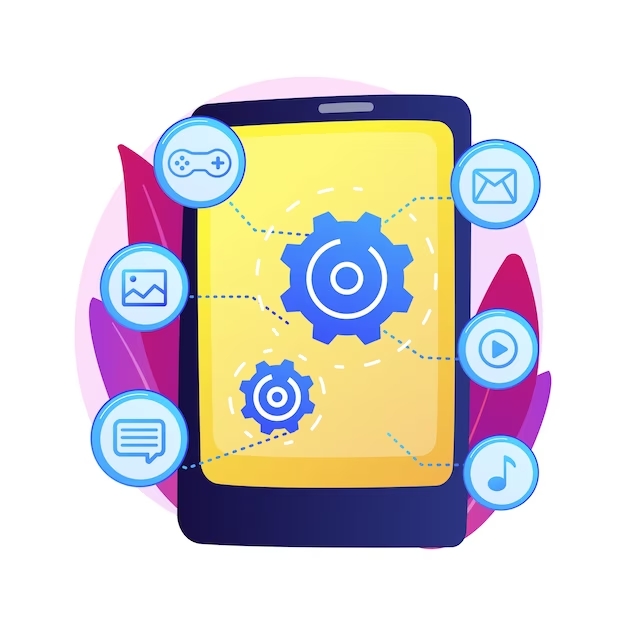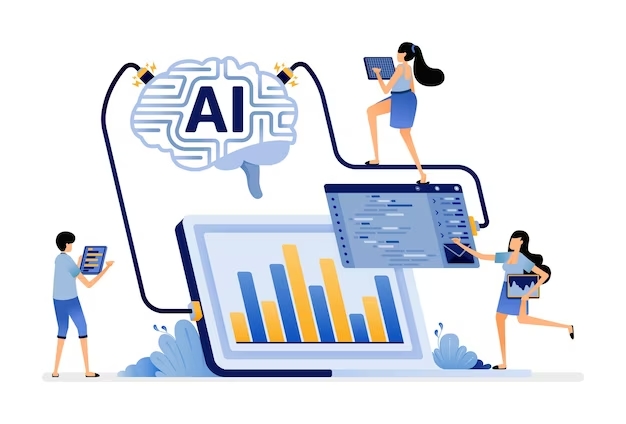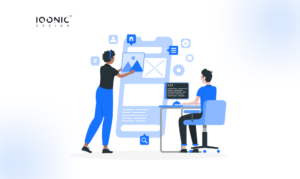
How Enterprise Application Integration Can Help Businesses Connect Digitally
Enterprise Application Integration (EAI) is a method that connects various software applications within an organization, allowing them to work together seamlessly. In today’s digital landscape, businesses rely heavily on technology and the ability to connect digitally. This digital connectivity is essential for several reasons, including improved efficiency, data sharing, and streamlined operations.
EAI offers numerous benefits in the context of digital business connections. It enhances communication between different applications, reduces manual data entry, and ensures consistency. These advantages lead to more efficient processes, cost savings, and improved decision-making. In this blog, we’ll delve into the world of Enterprise Application Integration (EAI), understanding what it is, how it functions, and real-world examples of its application.
Understanding Enterprise Application Integration

Enterprise Application Integration, often referred to as EAI, is the process of linking different software applications and systems used within an organization. Its primary role is facilitating the smooth flow of data and information across various applications, ensuring they work harmoniously. EAI acts as a digital bridge, connecting otherwise isolated systems.
Enterprise Application Integration encompasses various types and components. It can involve point-to-point connections or utilize middleware to integrate applications. Common EAI components include data transformation tools, message queues, and application programming interfaces (APIs). These components play crucial roles in data exchange and communication between systems.
To illustrate EAI in action, consider a scenario where a customer places an order on an e-commerce website. EAI can enable the seamless transfer of order details to the organization’s inventory management system, ensuring that stock levels are updated in real time. This integration reduces the risk of overselling products and enhances the customer experience.
Challenges in Digital Business Connectivity
In the ever-evolving digital landscape, businesses encounter several challenges in achieving seamless digital connectivity. One common challenge is the complexity of integrating diverse software applications and systems. Different applications often use incompatible data formats and communication protocols, making data exchange a cumbersome task.
Moreover, security concerns are a significant challenge. Guaranteeing data security and privacy in a connected environment is crucial. Cyber threats and data breaches pose a constant risk, and businesses must invest in robust security measures.
The need for a seamless integration solution is evident. Businesses require a unifying system like Enterprise Application Integration (EAI) to overcome these challenges. EAI acts as a bridge, enabling different systems to communicate effortlessly. It provides a standardized way to handle data and ensures secure connections, addressing the complexities and security concerns.
Benefits of EAI in Digital Connectivity
Enterprise Application Integration (EAI) offers numerous advantages to businesses seeking digital connectivity. First and foremost, EAI streamlines processes. It eliminates manual data entry and reduces the need for duplicate data handling. This efficiency results in quicker operations and fewer errors.
EAI also enhances data flow. By connecting disparate systems, it ensures that data is shared in real-time. This real-time data exchange is invaluable for decision-making, providing up-to-the-minute information.
Cost-saving is another benefit. EAI reduces operational costs by minimizing manual interventions and data discrepancies. It optimizes resource utilization and contributes to overall cost efficiency.
Additionally, EAI fosters better customer service. With integrated systems, businesses can respond to customer queries and requests more effectively. This improves customer satisfaction and loyalty.
Key Features of Effective EAI Solutions
Effective Enterprise Application Integration (EAI) solutions possess crucial features and capabilities. These systems enable seamless communication between diverse applications, streamlining data exchange. EAI systems offer real-time data synchronization, ensuring that information is up-to-date across the organization.
Scalability is a fundamental aspect of EAI. It allows businesses to expand and integrate new applications as they grow, accommodating changing needs. EAI systems are adaptable, meaning they can work with various data formats and communication protocols, ensuring application compatibility. Moreover, they provide robust security measures to safeguard sensitive data during integration.
Case Studies
Many companies have reaped the benefits of implementing Enterprise Application Integration (EAI) . A prime example is Amazon. EAI integration enabled them to connect their e-commerce platform with their supply chain management system. This streamlined the ordering and fulfillment processes, resulting in quicker deliveries and improved customer satisfaction
Another success story is Salesforce. By implementing EAI, Salesforce integrated its customer relationship management (CRM) system with marketing automation tools. This allowed them to provide personalized marketing campaigns, resulting in a 30% increase in sales.
Implementation and Best Practices
Implementing Enterprise Application Integration (EAI) effectively is essential for businesses seeking seamless digital connectivity. To attain this, consider the following best practices.
1.Define Clear Objectives:
Start by identifying your integration goals. What do you aim to accomplish with EAI, especially in the context of enterprise web applications?This transparency will guide the integration process.
2.Select the Right Tools:
Choose EAI tools that align with your business requirements. Ensure they support various data formats and have robust security features.
3. Plan Carefully:
Develop a well-thought-out integration plan. Consider the systems to connect, data flows, and potential bottlenecks.
4. Ensure Data Quality:
Data consistency is key. Verify and clean data before integration to prevent errors.
5. Testing and Monitoring:
Rigorous testing and continuous monitoring are vital. Identify and resolve issues promptly.
Challenges and Risks of EAI
While Enterprise Application Integration (EAI) offers numerous benefits, it’s not without challenges and risks. Common concerns include:
1. Complexity:
Integrating multiple systems can lead to potential bottlenecks.
2. Data Security:
EAI involves exchanging sensitive data. Security breaches and data leaks are risks that need mitigation.
3. Scalability:
As businesses grow, EAI systems must scale accordingly. Failing to do so can hinder operations.
Mitigating these challenges requires:
1. Robust Security Measures:
Implement strong security protocols to safeguard data.
2. Scalable Infrastructure:
Ensure the EAI system can handle growing data volumes.
3. Continuous Monitoring:
Regularly monitor the EAI system to identify and resolve issues promptly.
Future Trends in EAI
Future Trends in EAI

The future of Enterprise Application Integration (EAI) holds exciting prospects. One prominent trend is the increasing adoption of cloud-based EAI solutions, providing businesses flexibility and scalability. Artificial Intelligence (AI) and Machine Learning (ML) will play a significant role in automating data integration and making processes more efficient. Additionally, EAI will continue to evolve to support Internet of Things (IoT) devices, enabling seamless connectivity in the era of smart devices.
Conclusion
In today’s digitally connected world, EAI is not just an option; it’s a necessity for businesses. EAI streamlines operations, enhances data flow, and fosters collaboration. It enables businesses to adapt to evolving technologies and positions them for success in the digital age. As we look ahead, embracing EAI is a strategic move that fosters growth, innovation, and competitiveness. Businesses should consider implementing Enterprise Application Integration (EAI) to stay connected and thrive in this fast-paced, interconnected environment.






